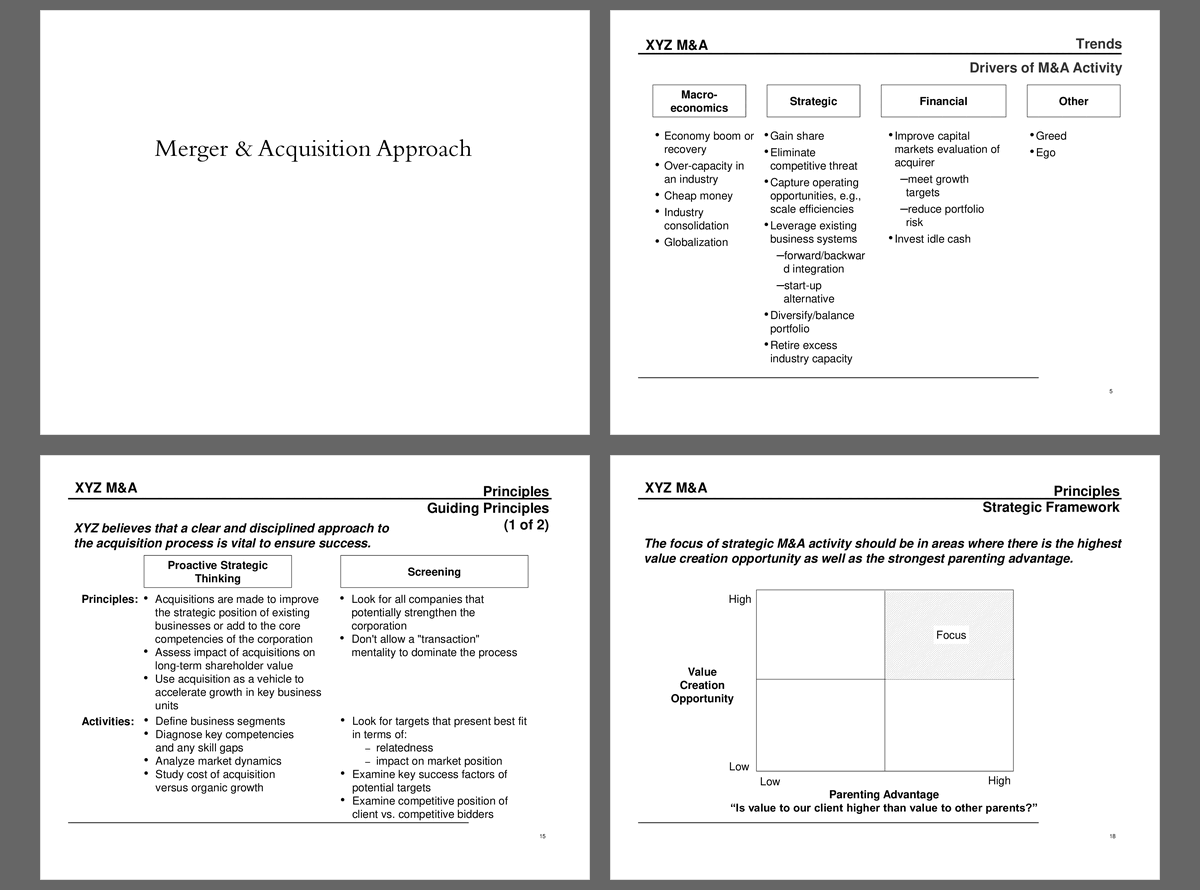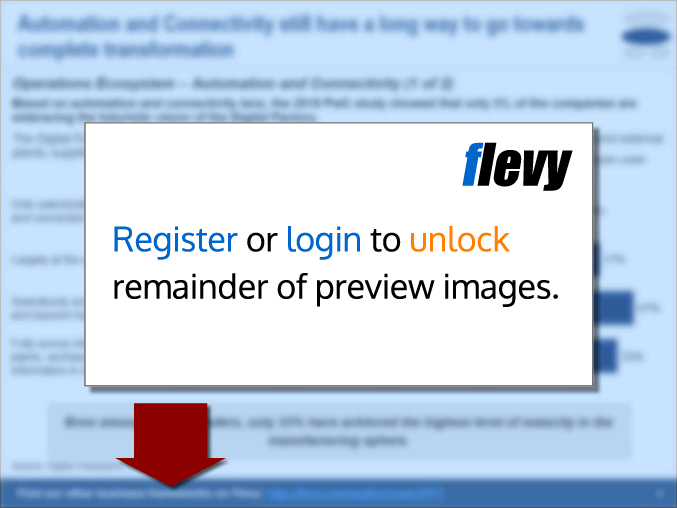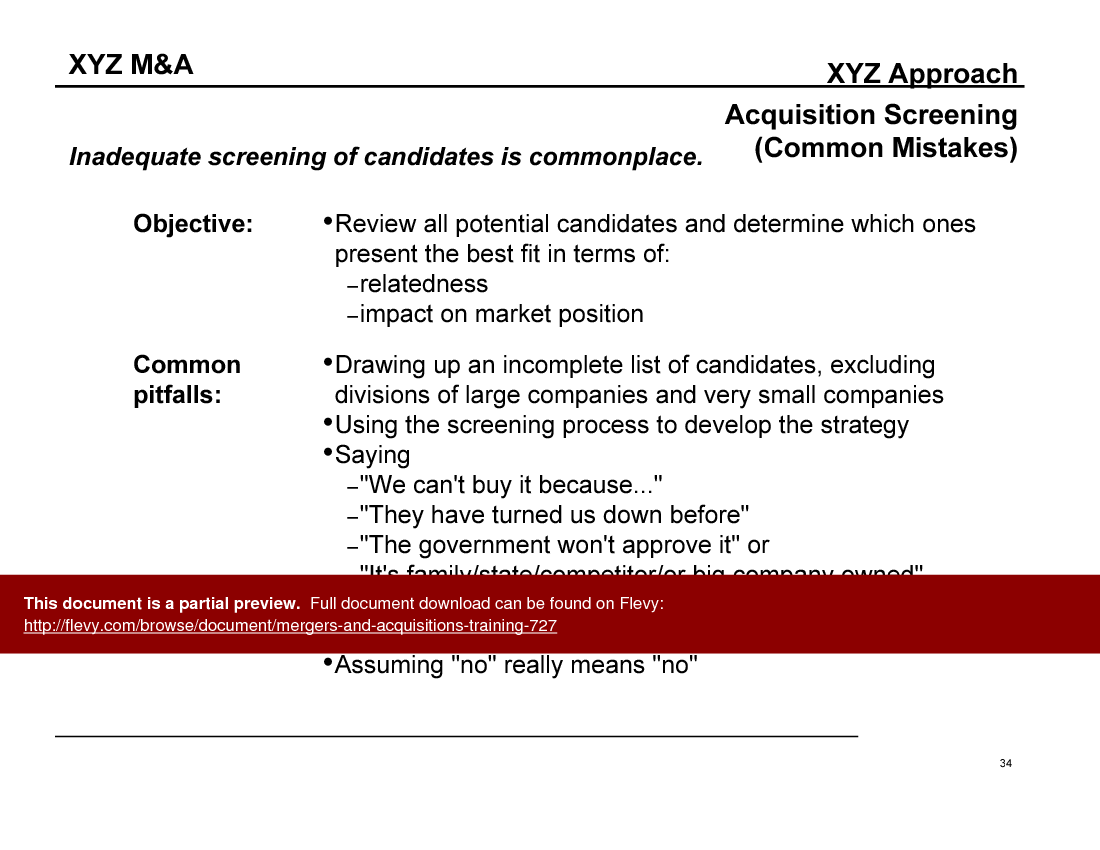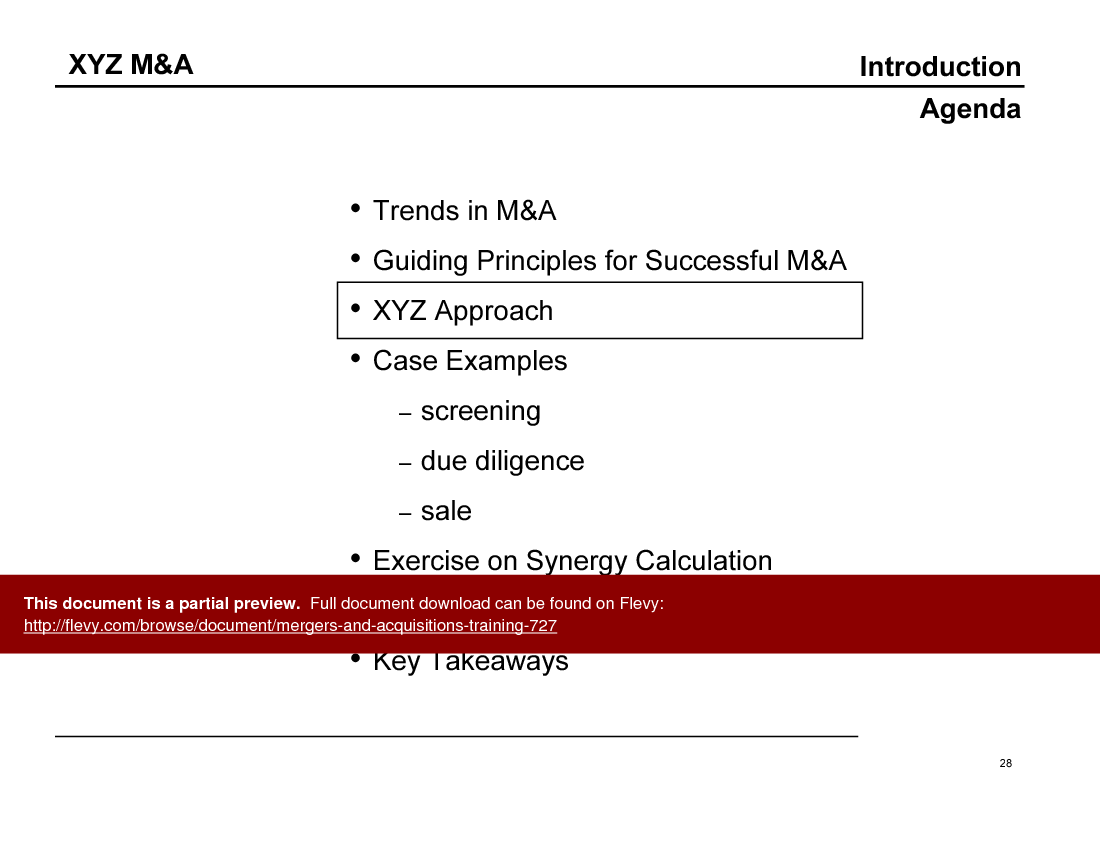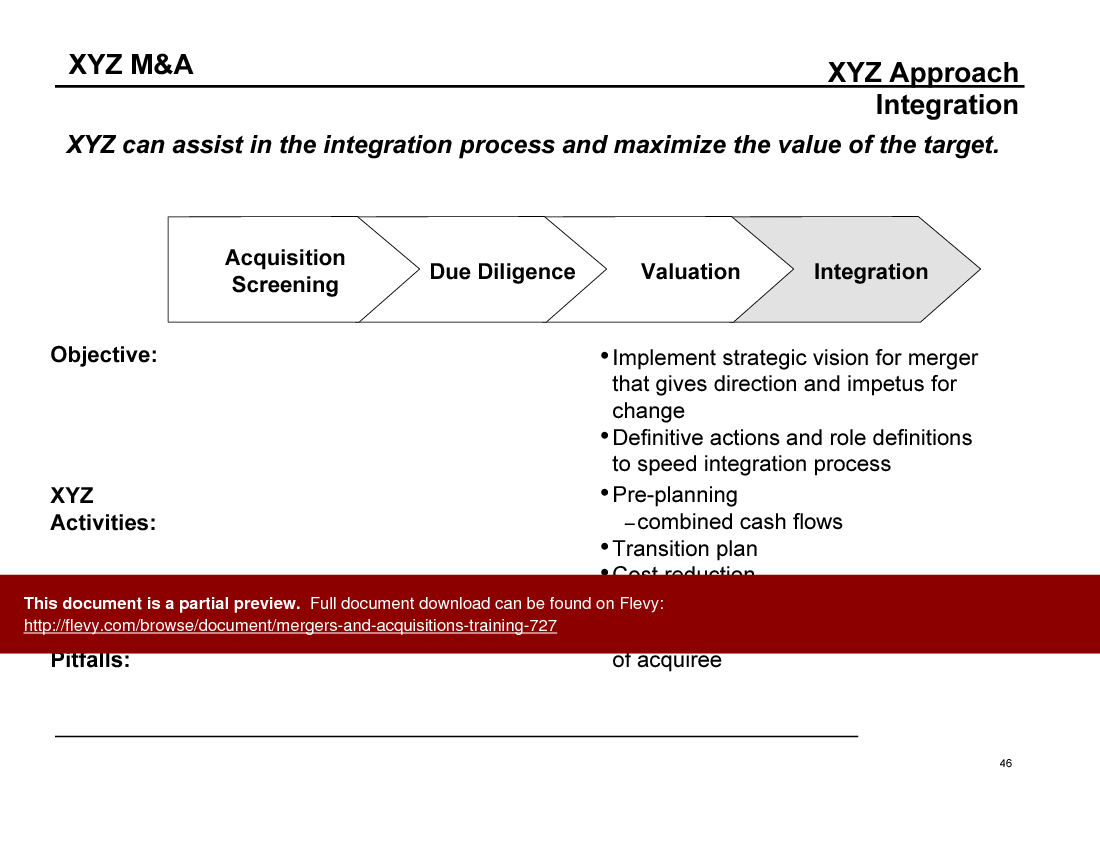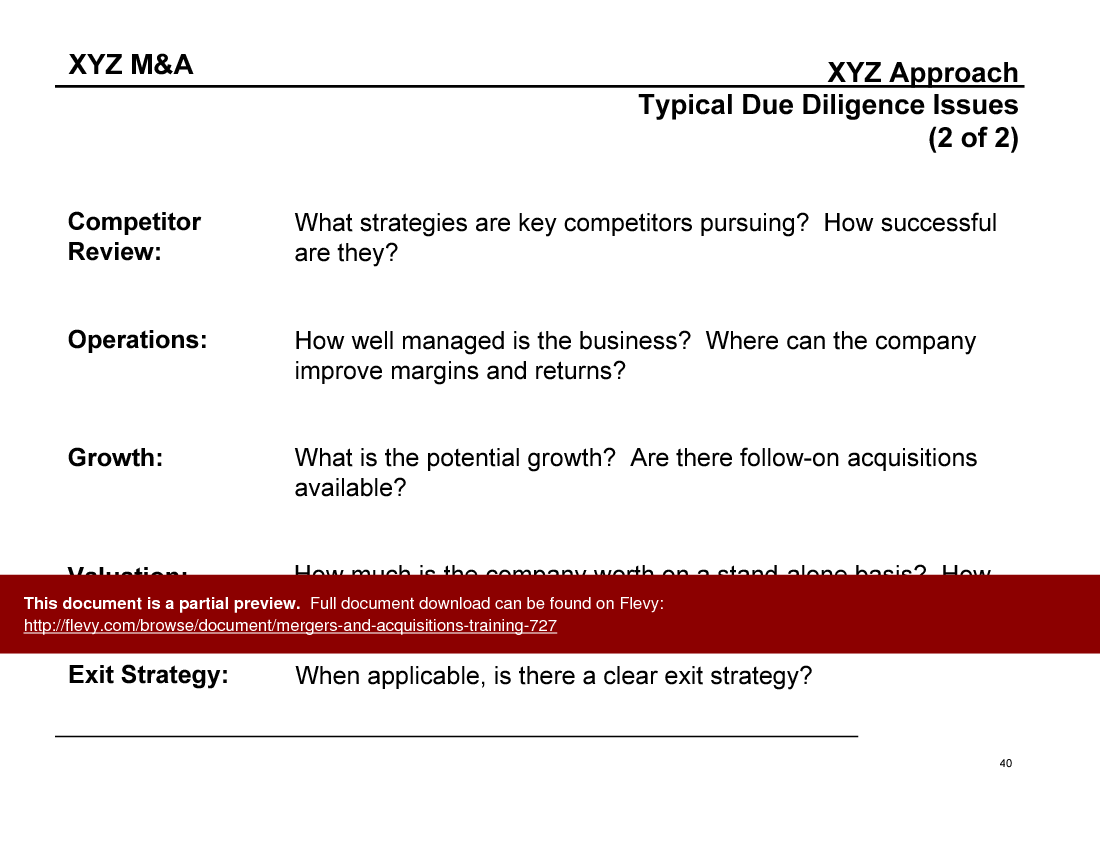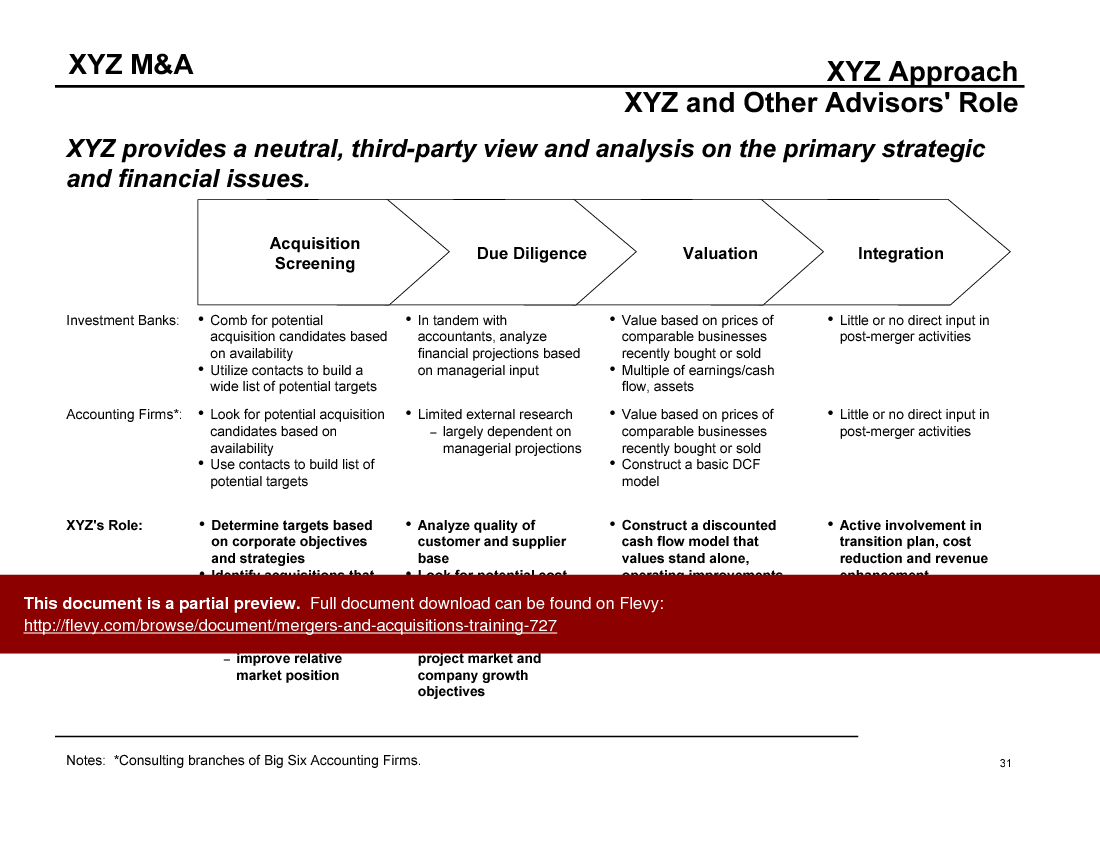Mergers & Acquisitions Training (PowerPoint PPT Slide Deck)
PowerPoint (PPT) 118 Slides
M&A PPT DESCRIPTION
This is a training material used for merger and acquisition projects.
It includes:
• Guiding Principles For Successful M&A
• The Firms M&A Approach
• Case Examples
• How to Calculate Synergies
• Typical Watchouts
• Key Takeaways
It contains many useful frameworks and tools that can be adapted for use in M&A deals.
merger & acquisition, M&A, due diligence, consulting, tools, approach, synergies,
This training material delves into the intricacies of M&A activities, highlighting the rapid growth in nominal dollar terms and the significant role of the junk bond market in the late 1980s. It examines how economic recovery has influenced recent M&A activity, emphasizing the importance of thorough due diligence and strategic analysis to ensure fair pricing. The document provides a detailed glossary of key terms, ensuring clarity and understanding of essential concepts.
The document also includes a comprehensive analysis of multiples paid for acquisitions over the years, underscoring the rising prices and the necessity for in-depth due diligence. It offers a structured approach to valuation, focusing on historical and future financial performance. The training material emphasizes the importance of identifying deal-breaker issues early and using information to build confidence in making bids.
Case examples are provided to illustrate the application of M&A principles in real-world scenarios. These examples cover various industries, showcasing the evaluation of potential acquisition candidates, market segment analysis, and the impact of strategic decisions on business growth and value realization. The document also includes exercises on synergy calculation, encouraging practical application of the concepts discussed.
The training material concludes with key takeaways, summarizing the major steps in the M&A process, from strategy development to integration. It highlights the complementary role of XYZ in the M&A process, focusing on strategic issues and value quantification. This document is an invaluable resource for executives looking to navigate the complexities of M&A and maximize the value of their transactions.
Got a question about the product? Email us at support@flevy.com or ask the author directly by using the "Ask the Author a Question" form. If you cannot view the preview above this document description, go here to view the large preview instead.
Source: Best Practices in M&A, Synergy PowerPoint Slides: Mergers & Acquisitions Training PowerPoint (PPT) Presentation Slide Deck, Documents & Files
M&A PPT SLIDES
This document is available as part of the following discounted bundle(s):
Save %!
Mergers and Acquisitions Toolkit
This bundle contains 7 total documents. See all the documents to the right.
